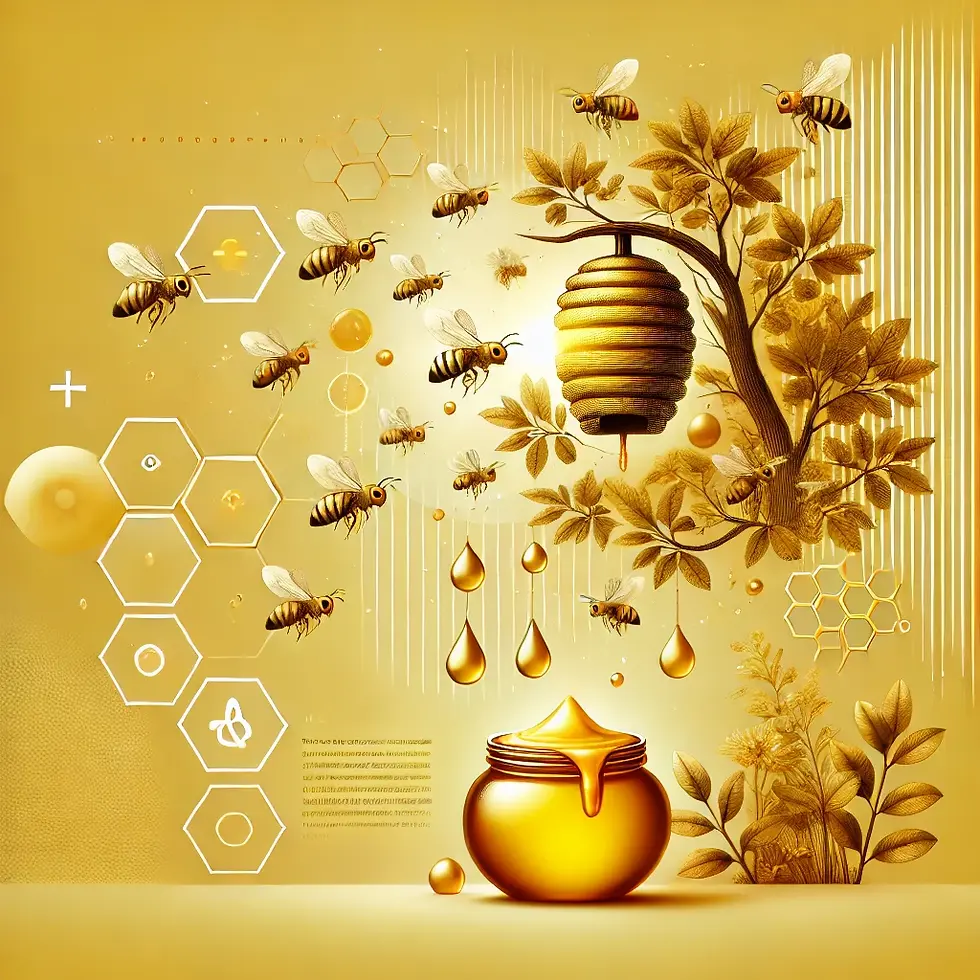Quick Silver: Mercury in Āyurveda
- Brian Shaad

- Jan 23
- 4 min read
Updated: Jan 26

Mercury, a substance with a long history of use in traditional medicines across the world, holds a particularly fascinating place in the Āyurvedic medicine cabinet. Known as parada in Sanskrit, mercury undergoes rigorous purification processes to transform it into therapeutic compounds such as mercury sulfide. These formulations have been used for centuries to treat ailments ranging from respiratory infections to cardiac conditions. However, in modern times, the use of mercury in medicine is often met with skepticism due to concerns about toxicity. How is mercury utilized in Āyurveda? What is its safety profile compared to Western regulatory standards? Can Āyurveda and modern science can find common ground?
Mercury Sulfide in Āyurveda
Mercury sulfide is a compound formed by combining mercury with sulfur. In Āyurveda, this compound is processed to achieve therapeutic properties while minimizing toxicity. The most notable types of mercury sulfide used in Āyurvedic medicine include:
Kajjali: a black compound prepared from purified mercury and sulfur. Kajjali serves as the foundation for many complex formulations, providing structural and functional stability to medicinal preparations.
Rasasindūra: recognizable by its vivid red hue, Rasasindūra is prepared through intricate procedures involving mercury and sulfur. Also known as rasasindoor or sindur, it is praised for its potency and wide range of applications.
Girisindhura: A red or orange-colored mercuric powder, chemically identified as mercuric oxide. This preparation differs slightly in its chemical composition and therapeutic use but shares similarities in its foundational principles.
These formulations are said to balance the tridoshas (vata, pitta, and kapha), enhance the bioavailability of other herbs in the preparation, and offer targeted benefits for specific health conditions.
Āyurvedic Properties of Mercury
In Āyurveda, mercury (parada) is considered to possess unique properties that make it highly valued as a therapeutic agent. Its properties include:
Rasa (taste): Mercury itself is tasteless but enhances the rasa of other ingredients in formulations.
Guṇa (quality): Mercury is considered to be guru (heavy) and snigdha (unctuous) in quality, aiding in stability and lubrication within the body.
Vīrya (potency): It is classified as ushna (hot in potency), which makes it effective in stimulating digestion and metabolic processes.
Vipāka (post-digestive effect): Mercury is believed to have a madhura (sweet) post-digestive effect, promoting nourishment and vitality.
Prabhāva (special property): Mercury’s transformative and rejuvenating qualities are its hallmark. It is said to act as a rasayana (rejuvenating agent), enhancing longevity and vitality.
These properties underline mercury’s ability to balance the tridoshas and address various systemic imbalances when used in a purified and processed form.
Purification Processes: Science Behind Tradition
In Āyurveda, the purification of mercury (sodhana) is paramount. Raw mercury, a highly toxic substance, undergoes multi-step detoxification involving herbs, minerals, and heat treatments. These processes aim to eliminate impurities and convert mercury into a therapeutic form.
This alchemical transformation (rasashastra) ensures that the final product is non-toxic and bioavailable. Modern analyses suggest that these traditional purification methods significantly reduce free mercury levels, thereby lowering the risk of toxicity. However, the efficacy and safety of these methods depend on meticulous adherence to traditional protocols.
Safety Concerns and Modern Perspectives
The safety of mercury-based medicines has been a subject of debate, especially when viewed through the lens of Western toxicology. Key concerns include:
Toxicity Risks: mercury in its elemental or inorganic forms can be highly toxic, affecting the nervous, renal, and immune systems.
Dosage and Standardization: ensuring safe dosages and consistent quality is critical, yet challenging, in artisanal preparations.
Contrarily, several studies highlight that mercury sulfide, when properly prepared and administered in low doses, is significantly less toxic than elemental mercury. In these studies, the stability of the sulfide bond plays a key role in reducing bioavailability and mitigating harmful effects.
Āyurvedic Versus Western Approaches to Mercury
In Western medicine, mercury use is largely restricted due to its toxicity. Regulatory agencies, such as the FDA and WHO, have established stringent limits for mercury exposure in food, medicine, and cosmetics. Dental amalgams, once a common source of mercury, are being phased out in favor of safer alternatives.
By contrast, Āyurveda views purified mercury as a potent therapeutic agent, provided it is used responsibly. This divergence stems from fundamental differences in approach:
Western Approach: prioritizes avoiding mercury altogether due to its inherent toxicity.
Āyurvedic Approach: focuses on transforming mercury into a safe, therapeutic form through purification and precise formulation.
Is Mercury Safe in Āyurveda?
The answer lies in the details. Mercury sulfide-based formulations in Āyurveda can be safe when:
Purification protocols are followed: traditional methods must be rigorously implemented to ensure detoxification.
Doses are low and controlled: therapeutic benefits are linked to minimal doses, underscoring the principle that “the dose makes the poison.”
Preparation meets modern standards: testing for residual mercury levels and standardizing products can bridge gaps between traditional practices and contemporary safety expectations.
Final Thoughts
The use of mercury in Āyurveda represents a sophisticated understanding of chemistry and medicine. While it’s natural to approach mercury with caution, it’s equally important to recognize the depth of Āyurvedic expertise in transforming toxic substances into healing agents. Ongoing research and collaboration between traditional practitioners and modern scientists can help ensure that these age-old remedies are both effective and safe for contemporary use.




Comments